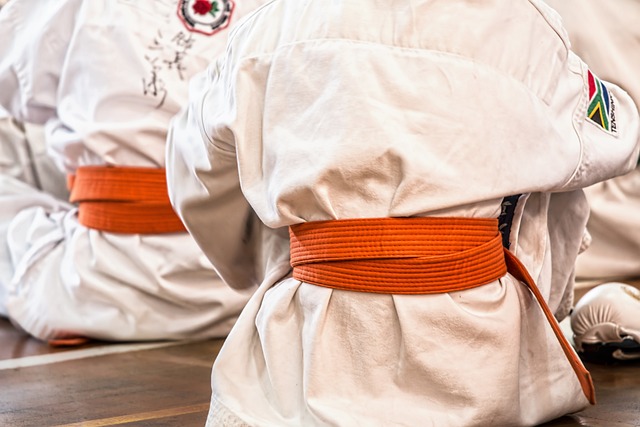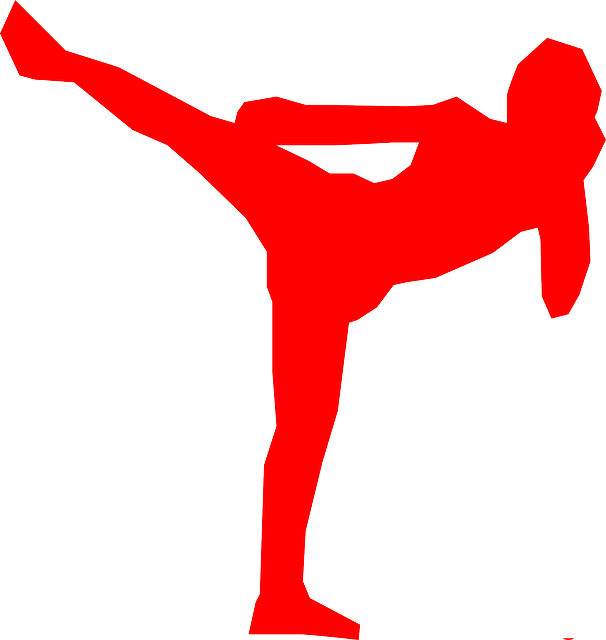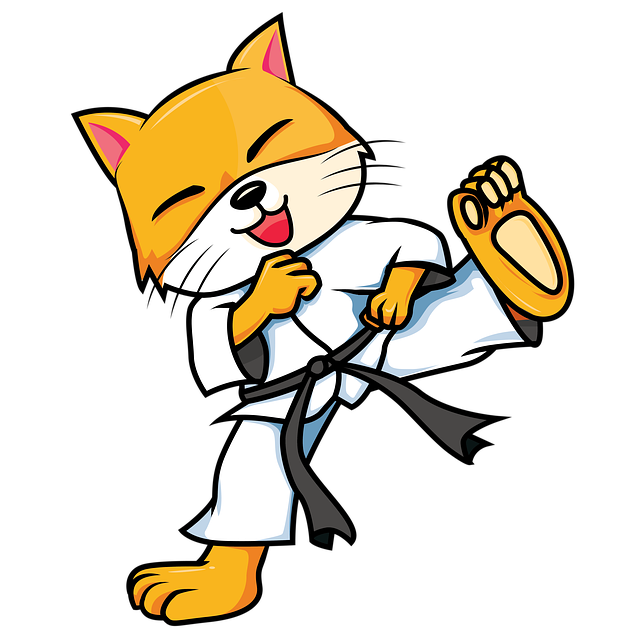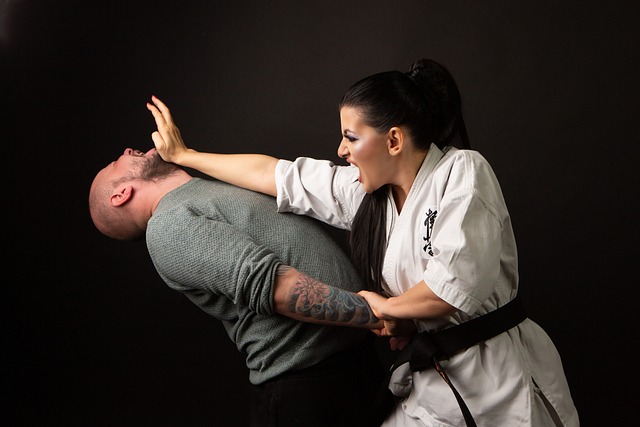When buying karate equipment, it's crucial to select a high-quality gi made from durable, breathable cotton or hemp fabric for optimal comfort and mobility during training. The traditional white gi, symbolizing purity and humility, is a global sign of respect for karate's rich history and values. A properly fitting gi, with a secure obi indicating rank, is essential for both functional performance and adherence to the martial art's cultural emblem. When purchasing, consider the fit, size, and even the pre-distressed look for traditional dojos. For those training in warmer climates, Bando jackets are a lighter alternative to traditional gis. Additionally, protective gear such as elbow and knee pads may be necessary for specialized dojos. Ensure compliance with the World Karate Federation's uniform standards if you participate in competitive karate to maintain fairness during events. Whether you're a beginner or an experienced practitioner, investing in the right karate equipment tailored to your specific needs will enhance both your practice and respect for this traditional discipline.
Discover the quintessential attire of martial artists with our exploration into the world of karate outfits. Known for its simplicity and functionality, the karate gi is more than just a uniform—it’s a symbol of discipline and respect within the martial arts community. In this article, we’ll delve into the essential elements that define an authentic karate gi and offer practical tips on how to select the right one when you buy karate equipment. We’ll also venture beyond the traditional gi to examine various styles and adaptations used in different karate disciplines. Whether you’re a seasoned practitioner or a newcomer to the art, understanding karate attire is key to fully embracing the martial arts experience.
- Understanding the Essentials of Karate Attire: The Gi
- Key Characteristics of a Traditional Karate Gi
- Tips for Selecting the Right Gi When Buying Karate Equipment
- Exploring Variations and Styles in Karate Outfits Beyond the Gi
Understanding the Essentials of Karate Attire: The Gi

When engaging in the disciplined practice of karate, donning the appropriate attire is a sign of respect for the tradition and the art itself. A key component of this attire is the gi, a two-piece garment that serves as both a uniform and a symbol of unity among practitioners worldwide. The gi typically consists of a jacket and trousers, fastened with belt ties called obi, which also serve to denote the wearer’s rank or level within their karate practice. For those looking to purchase karate equipment, acquiring a well-fitted gi is crucial for both comfort and adherence to the sport’s traditional standards. It is made of cotton or hemp for durability and breathability, allowing for ease of movement during practice and competition. The color of the gi often varies by style, with white being common across many forms of karate, as it signifies purity and humility. When buying karate equipment, it’s important to consider the quality of the fabric and the fit to ensure that the garment is neither too tight nor too loose, as this can hinder performance and comfort during practice. Additionally, the gi should be free from unnecessary embellishments, maintaining the traditional and minimalist aesthetic that is characteristic of karate attire. Whether you are a beginner or an experienced practitioner, investing in a high-quality gi from a reputable source will not only enhance your practice but also honor the rich history and tradition of this martial art.
Key Characteristics of a Traditional Karate Gi

When practicing the art of karate, donning the appropriate attire is essential to both the respect of tradition and the functionality necessary for performance. A traditional karate outfit, commonly known as a “Gi,” serves as the standard uniform for practitioners around the world. The Gi typically consists of a jacket and trousers made from heavy cotton or hemp fabric, which allows for breathability and durability during rigorous training sessions. The jacket, known as an “uchiwa,” should have long sleeves that can be tied at the wrists with a hachimaki (a headband) to ensure it stays in place. The trousers, or “bajon,” are straight-legged and reach just below the ankles, providing ease of movement for various karate stances and kicks.
Key characteristics of a traditional Gi include its simple and modest design, which is symbolic of the humility and discipline central to karate philosophy. The jacket and trousers are traditionally white, symbolizing purity and honesty. The Gi should be fitted correctly; it is neither too tight nor too loose, allowing for full range of motion without being a distraction. When purchasing karate equipment, it is advisable to buy from reputable sources that offer well-constructed Gis designed specifically for the needs of karate practitioners. These gis are often pre-shrunk to minimize shrinkage after washing, ensuring longevity and maintain proper fit. Whether you are a beginner or an experienced martial artist, investing in a quality Gi is crucial for both your training and respecting the traditions of this esteemed discipline.
Tips for Selecting the Right Gi When Buying Karate Equipment

When embarking on the quest to purchase karate equipment, including the quintessential gi, it’s crucial to consider several factors to ensure you secure a garment that not only adheres to traditional standards but also suits your individual needs. The gi, a key component of a martial artist’s attire, serves as both a uniform and a symbol of respect for the discipline. When buying karate equipment, particularly a gi, seek out materials such as cotton or hemp blends that offer durability while providing comfort during rigorous training sessions. These fabrics not only withstand the test of time but also allow for ease of movement, which is essential for executing precise techniques.
Additionally, pay close attention to the fit and sizing specifications provided by reputable manufacturers. A properly fitting gi should neither be too tight nor overly baggy. It should contour to your body without restricting your range of motion. Most karate outfits come in standard sizes, but it’s advisable to refer to the size chart before making a purchase. Keep in mind that different brands may have slightly variations in sizing. Opting for a gi with a pre-distressed look can also give the appearance of an aged garment that has been broken in, which is often preferred in many karate dojos. By carefully considering these aspects when you buy karate equipment, you’ll be well on your way to finding a gi that meets both the functional and traditional expectations of the martial art.
Exploring Variations and Styles in Karate Outfits Beyond the Gi

When one thinks of traditional martial arts attire, the image that often comes to mind is the white Gi worn in Karate practice and competition. However, beyond this ubiquitous garment, variations and styles in Karate outfits cater to different needs, preferences, and conditions. Practitioners may opt for alternative attire when training or competing, each with its own advantages. For instance, karateka who train in hotter climates might prefer lightweight Bando jackets, which are shorter than Gis and made of cotton or other breathable materials. These jackets, along with matching pants, not only facilitate mobility but also absorb sweat to keep the wearer cool and comfortable during intensive training sessions.
For those looking to purchase karate equipment, it’s worth exploring the full spectrum of options available. Specialized dojos might require their students to don specific outfits that align with the school’s discipline or focus area. Some may incorporate elements like reinforced elbow and knee pads for protective training. Additionally, competitive Karate has its own set of requirements where the uniform must meet the standards set by governing bodies like the World Karate Federation (WKF). These regulations ensure that all participants are on a level playing field during competitions. When buying karate equipment, it’s crucial to consider the type of training you engage in, the climate conditions, and any specific requirements from your sensei or the competition rules. Whether you’re a beginner or an experienced practitioner, investing in quality karate gear can enhance your performance and comfort while practicing this ancient and disciplined art form.
When delving into the practice of karate, one quickly learns that the attire is more than mere clothing—it’s a symbol of respect and tradition. The gi, a central element in karate training, serves as a universal uniform representing discipline and unity among practitioners worldwide. Whether you’re a beginner looking to buy karate equipment or an experienced martial artist seeking to expand your training gear, understanding the key characteristics of a traditional gi is paramount. This article has navigated through the essentials of karate attire, offering insights into selecting the right gi and exploring variations in karate outfits beyond the classic gi. When considering the purchase of karate equipment, remember that the gi you choose should reflect both your commitment to the art and your personal style. In conclusion, whether you’re stepping onto the mat for the first time or honing your skills, the right karate outfit is a foundational aspect of your martial arts journey.